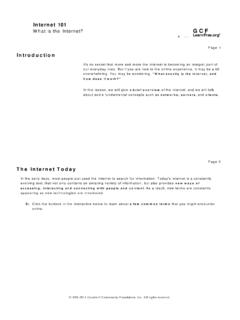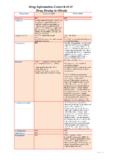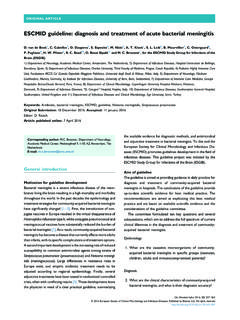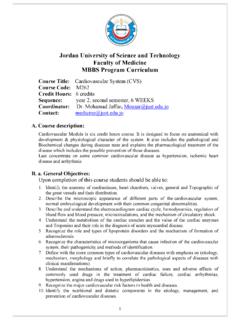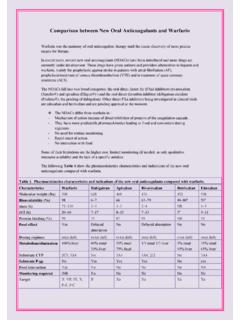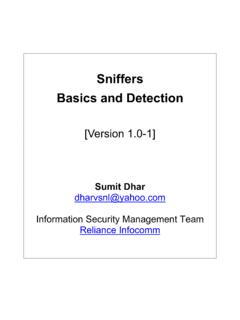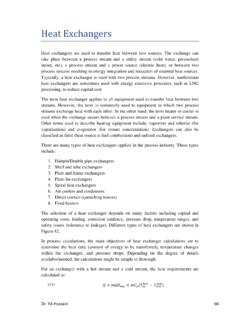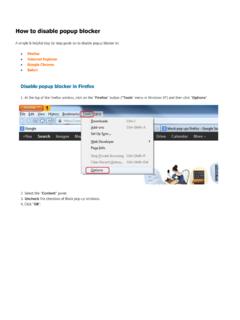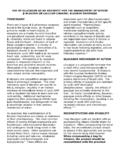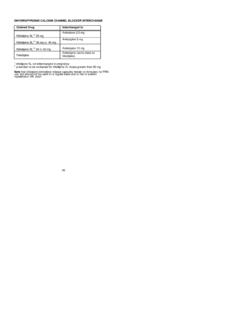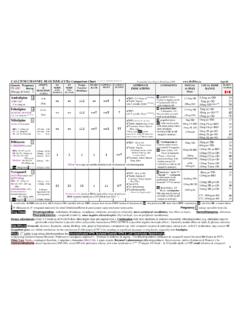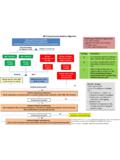Transcription of LABETALOL Class: Beta-Blocker with Alpha …
1 LABETALOL class : Beta-Blocker with Alpha - blocking activity Indications Treatment of mild-to-severe hypertension; for severe hypertension , Pediatric hypertension; management of pre-eclampsia; severe hypertension in pregnancy; hypertension during acute ischemic stroke Available dosage form in the hospital: 200MG VIAL Dosage: -Hypertension: Oral: Initial: 100 mg twice daily, may increase as needed every 2-3 days by 100 mg twice daily (titration increments not to exceed 200 mg twice daily) until desired response is obtained; usual dose: 100-400 mg twice daily , may require up to g/day. -Acute hypertension (hypertensive emergency/urgency): bolus: Initial: 20 mg push over 2 minutes; may administer 40-80 mg at 10-minute intervals, up to 300 mg total cumulative dose; as appropriate, follow with oral antihypertensive regimen infusion (acute loading): Initial: 2 mg/minute; titrate to response up to 300 mg total cumulative dose (eg, discontinue after hours of 2 mg/minute); usual total dose required: 50-200 mg; as appropriate, follow with oral antihypertensive regimen.
2 Note: Although loading infusions are well described in the product labeling, the labeling is silent in specific clinical situations, such as in the patient who has an initial response to LABETALOL infusions but cannot be converted to an oral route for subsequent dosing. There is limited documentation of prolonged continuous infusions (ie, >300 mg/day). In rare clinical situations, higher continuous infusion doses up to 6 mg/minute have been used in the critical care setting (eg, aortic dissection) and up to 8 mg/minute (eg, hypertension with ongoing acute ischemic stroke). At these doses, it may be best to consider an alternative agent if the LABETALOL infusion is not meeting the goals of therapy. At the other extreme, continuous infusions at relatively low doses ( mg/minute) have been used in some settings (following loading infusion in patients who are unable to be converted to oral regimens or in some cases as a continuation of outpatient oral regimens).
3 These prolonged infusions should not be confused with loading infusions. Because of wide variation in the use of infusions, an awareness of institutional policies and practices is extremely important. Careful clarification of orders and specific infusion rates/units is required to avoid confusion. Due to the prolonged duration of action, careful monitoring should be extended for the duration of the infusion and for several hours after the infusion. Excessive administration may result in prolonged hypotension and/or bradycardia. -Arterial hypertension in acute ischemic stroke: : -Patient otherwise eligible for reperfusion treatment (eg, alteplase) except blood pressure (BP) >185/110 mm Hg: 10-20 mg over 1-2 minutes; may repeat once. If BP does not decline and remains >185/110 mm Hg, alteplase should not be administered.
4 -Management of BP during and after reperfusion treatment (eg, alteplase) to maintain BP 180/105 mm Hg: If systolic BP >180-230 mm Hg or diastolic >105-120 mm Hg, then administer 10 mg over 1-2 minutes followed by an infusion of 2-8 mg/minute. If hypertension is refractory or diastolic BP >140 mm Hg, consider other antihypertensives (eg, nitroprusside). to oral conversion: Upon discontinuation of infusion, may initiate oral dose of 200 mg followed in 6-12 hours with an additional dose of 200-400 mg. Thereafter, dose patients with 400-2400 mg/day in divided doses depending on blood pressure response. Geriatric Refer to adult dosing. Hypertension: Oral:Manufacturer s recommendations: Initial: 100 mg twice daily; may titrate in increments of 100 mg twice daily; usual maintenance: 100-200 mg twice daily ACCF/AHA Expert Consensus recommendations: Consider lower initial doses and titrating to response (Aronow, 2011) Common side effect: Cardiovascular: Orthostatic hypotension.
5 Central nervous system: Dizziness, fatigue .Gastrointestinal: Nausea. Pregnancy Risk Factor: C
